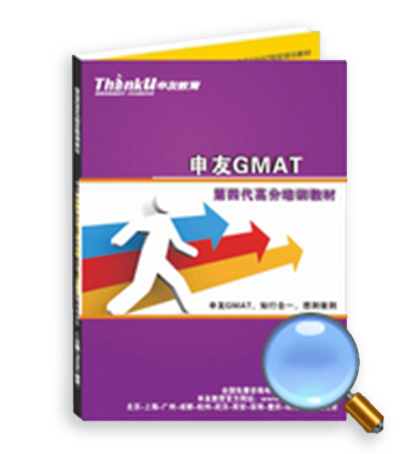Official22托福阅读Passage2The Birth of Photography 文本+题目原文+答案解析【雷哥托福】
2019-02-21 10:20:11 发布 来源:雷哥托福TPO22托福阅读Passage2 The Birth of Photography 文本+题目原文+答案解析
The Birth of Photography
Perceptions of the visible world were greatly altered by the invention of photography in the middle of the nineteenth century. In particular, and quite logically, the art of painting was forever changed, though not always in the ways one might have expected. The realistic and naturalistic painters of the mid- and late-nineteenth century were all intently aware of photography—as a thing to use, to learn from, and react to.
Unlike most major inventions, photography had been long and impatiently awaited. The images produced by the camera obscura, a boxlike device that used a pinhole or lens to throw an image onto a ground-glass screen or a piece of white paper, were already familiar—the device had been much employed by topographical artists like the Italian painter Canaletto in his detailed views of the city of Venice. What was lacking was a way of giving such images permanent form. This was finally achieved by Louis Daguerre (1787-1851), who perfected a way of fixing them on a silvered copper plate. His discovery, the "daguerreotype," was announced in 1839.■
A second and very different process was patented by the British inventor William Henry Talbot (1800-1877) in 1841.■ Talbot's "calotype" was the first negative-to-positive process and the direct ancestor of the modern photograph. The calotype was revolutionary in its use of chemically treated paper in which areas hit by light became dark in tone, producing a negative image.■This "negative," as Talbot called it, could then be used to print multiple positive images on another piece of treated paper.■
The two processes produced very different results. The daguerreotype was a unique image that reproduced what was in front of the camera lens in minute, unselective detail and could not be duplicated. The calotype could be made in series, and was thus the equivalent of an etching or an engraving. Its general effect was soft edged and tonal.
One of the things that most impressed the original audience for photography was the idea of authenticity. Nature now seemed able to speak for itself, with a minimum of interference. The title Talbot chose for his book, The Pencil of Nature (the first part of which was published in 1844), reflected this feeling. Artists were fascinated by photography because it offered a way of examining the world in much greater detail. They were also afraid of it, because it seemed likely to make their own efforts unnecessary.
Photography did indeed make certain kinds of painting obsolete—the daguerreotype virtually did away with the portrait miniature. It also made the whole business of making and owning images democratic. Portraiture, once a luxury for the privileged few, was suddenly well within the reach of many more people.
In the long term, photography's impact on the visual arts was far from simple. Because the medium was so prolific, in the sense that it was possible to produce a multitude of images very cheaply, it was soon treated as the poor relation of fine art, rather than its destined successor. Even those artists who were most dependent on photography became reluctant to admit that they made use of it, in case this compromised their professional standing.
The rapid technical development of photography—the introduction of lighter and simpler equipment, and of new emulsions that coated photographic plates, film, and paper and enabled images to be made at much faster speeds—hadsome unanticipated consequences. Scientific experiments made by photographers such as Eadweard Muybridge (1830-1904) and Etienne-Jules Marey (1830-1904) demonstrated that the movements of both humans and animals differed widely from the way they had been traditionally represented in art. Artists, often reluctantly, were forced to accept the evidence provided by the camera. The new candid photography—unposed pictures that were made when the subjects were unaware that their pictures were being taken—confirmed these scientific results, and at the same time, thanks to the radical cropping (trimming) of images that the camera often imposed, suggested new compositional formats. The accidental effects obtained by candid photographers were soon being copied by artists such as the French painter Degas.
TPO22 托福阅读 Passage1 The Birth of Photography 题目
Question 1 of 14: What can be inferred from paragraphs 1 and 2 about the effect of photography on nineteenth-century painting?
A. Photography did not significantly change the way people looked at reality.
B. Most painters used the images of the camera obscura in preference to those of the daguerreotype.
C. Painters who were concerned with realistic or naturalistic representation were particularly influenced by photography.
D. Artists used the long-awaited invention of photography in just the ways they had expected to.
Question 2 of 14: According to paragraphs 2 and 3 which of the following did the daguerreotype and the calotype have in common?
A. They were equally useful for artists.
B. They could be reproduced.
C. They produced a permanent image
D. They were produced on treated paper.
Question 3 of 14: The word "duplicated" in the passage is closest in meaning to
A. copied
B. replaced
C. handled
D. clarified
Question 4 of 14:The phrase "Its general effect" in the passage refers to
A. the camera lens
B. the calotype
C. the etching
D. the engraving
Question 5 of 14: The word "authenticity" in the passage is closest in meaning to
A. improvement
B. practicality
C. genuineness
D. repetition
Question 6 of 14: What point does the author make in paragraph 6?
A. Paintings became less expensive because of competition with photography.
B. Photography, unlike painting, was a type of portraiture that even ordinary people could afford.
C. Every style of painting was influenced by the invention of photography.
D. The daguerreotype was more popular than the calotype.
Question 7 of 14: The word "reluctant" in the passage is closest in meaning to
A. unable
B. embarrassed
C. unlikely
D. unwilling
Question 8 of 14: Which of the sentences below best expresses the essential information in the highlighted sentence in the passage? Incorrect choices change the meaning in important ways or leave out essential information.
A. Photography did not replace other fine arts because people felt the image looked cheap in relation to the other arts.
B. Photography was not considered a true art because people could use it to create many images cheaply.
C. Photography was so cheap and readily available that it could be purchased by people who were too poor to purchase fine art.
D. Photography not only spread quickly but also was a cheap art form and so became true successor of fine arts rather than its poor relation.
Question9 of 14: The word "unanticipated" in the passage is closest in meaning to
A. indirect
B. not expected
C. unquestionable
D. beneficial
Question10 of 14: The word "accidental" in the passage is closest in meaning to
A. surprising
B. unintentional
C. realistic
D. unusual
Question11 of 14: Which of the following is mentioned in paragraph 8 as a benefit that artists derived from photography?
A. It inspired artists to use technological themes in their painting.
B. It lent prestige to those artists who used photographs as models for paintings
C. It provided artists with new types of equipment to speed up the painting process.
D. It motivated artists to think about new ways to compose images in their paintings.
Question 12 of 14: It can be inferred from paragraph 8 that one effect that photography had on painting was that it
A. provided painters with new insights into how humans and animals actually move
B. showed that representing movement could be as interesting as portrait art
C. increased the appeal of painted portraiture among the wealthy
D. influenced artists to improve techniques for painting faster
Question13 of 14: Look at the four squares HI that indicate where the following sentence could be added to the passage
Although his process produced permanent images, each was unique and no reproduction of the picture was possible.
Where would the sentence best fit?
A. A second and very different process was patented by the British inventor William Henry Talbot (1800-1877) in 1841.
B. Talbot's "calotype" was the first negative-to-positive process and the direct ancestor of the modern photograph. The calotype was revolutionary in its use of chemically treated paper in which areas hit by light became dark in tone, producing a negative image.
C. This "negative," as Talbot called it, could then be used to print multiple positive images on another piece of treated paper.
D. /
Question14 of 14: The invention of photography had a significant impact on the art of painting in the nineteenth century.
Answer Choices
A. For a brief time, artists preferred not to paint natural or realistic images that would have to compete with photographs.
B. Before photography, Canaletto had used the camera obscura to project scenes onto a paper or glass plate.
C. The photographic processes of Louis Daguerre and William Henry Talbot both made permanent images, but only Talbot's process allowed making multiple copies.
D. The work of Eadweard Muybridge and Etienne-Jules Marey established photography both as a science and as an art.
E. Photography made accurate images widely and inexpensively available, but this popular success also had the effect of lowering its perceived value in relation to the fine arts.
F.Photography eliminated the painted portrait miniature, led artists to accurately represent movement, and affected pictorial composition, but did not replace traditional visual arts.
TPO22托福阅读Passage2 The Birth of Photography真题解析
Question 1 of 14
答案: C
解析:以nineteenth-century做关键词定位至第一段最后一句,提到十九世纪中晚期的painter都非常专注于photography,去使用,去学习,去回应,所以正确答案是C,“受影响”。A选项与第一段首句相反,不选;B选项的比较原文未提及,也没法推断,错误;D完全没提到任何相关信息,不选。
Question 2 of 14
答案:C
解析:A的equally useful原文完全未提及,错误;B的reproduce是错误的,因为之前我们提到daguerreotype是不能复制的;C正确,根据原文paragraph 2的倒数第三句,提到当时缺乏的是permanent form,后来这个问题被Louis Daguerre的发明daguerreotype解决了,所以daguerreotype是permanent form,至于Calotype,paragraph 3第二句提到了是现代摄影的始祖,当然是permanent form,所以C选项正确。D的那个paper是Calotype采用的,daguerreotype不用,D错误。
Question 3 of 14
答案:A
解析:duplicate“复制”,所以正确答案是A的copy。原文提到daguerreotype是一张图,这张图细微而完整地再现了摄相机镜头前的东西,并且是不能怎么样的。这段提到calotype和daguerreotype产生了两种不同的结果,下一句说calotype的产生是一系列的,对应daguerreotype的产生应该是单独的,也就是不能复制,所以答案是A。其他都不合文意。‘’
Question 4 of 14
答案:B
解析:指代题,指的是前句主语,所以正确答案是B,选项C与选项D并列,都不选;A不合文意。
Question 5 of 14
答案:C
解析:authenticity“真实性”,所以正确答案是C的genuineness。来自authentic“真实的”。原文提到给观看的人留下印象的是什么idea,下句解释说自然开始自我表达,不受干扰,也就是说真实性,所以正确答案是C。B和D明显不正确,A“改善”并不一定就真实,所以也不选。
Question 6 of 14
答案:B
解析:此段很短,快速扫完,叙述了两点,Photography一是使某些painting被遗弃,二是使making and owning images大众化,所以正确答案是B,“即使普通大众也用得起”。A的competition原文未提及;C的every style原文未提及,而且也太绝对;D的比较原文未提及。
’
Question 7 of 14
答案:D
解析:reluctant“不情愿的”,所以正确答案是D的unwilling。原文提到即使那些最依赖摄影的人也 承认他们在使用摄影。前文说由于摄影太廉价,所以大家都不把它当做fine art。既然不是fine art,人们自然不愿意,所以unwilling正确。但那些人确实在用,所以unable和unlikely都不合文意,至于embarrassed完全不正确,不是很“尴尬地”承认。
Question 8 of 14
答案:B
解析:原句是因果关系,所以D的转折错误;原因是medium was so prolific,结果是treated as poor relation of fine art,所以正确答案是B。A的果中的replace原文未提及,错误;C的that之后的结果原文未提及,错误。
Question 9 of 14
答案:B
解析:unanticipated“没料到的,意外的”,所以正确答案是B的not expected。原词有个否定前缀,基本上应该表达否定的意思,所以D错误;unquestionable虽然有否定前缀,但其实是个肯定词,所以C错误;原文提到摄影技术的快速发展有什么样的影响,A间接影响表达通顺,但因为原文从没说过直接影响是什么,所以不选。
Question 10 of 14
答案:B
解析:accidental“意外的”,所以正确答案是B的unintentional,想到accident事故。原文提到candid photography取得的什么效果很快就被画家学去了,无意之中得到的效果说得通,所以正确答案是B。C和D明显不正确,surprising表示令人惊讶的,这里也没有这层意思。
Question 11 of 14
答案:D
解析:以artist做关键词定位至后半段,提到artist不得不接受camera提供的事实,新技术confirm这些事实,有了new compositional formats,所以正确答案是D,鼓励了艺术家们用新方法compose paintings。A的technological theme,B的prestige和C的speed up原文均没提到,都不选。
Question 12 of 14
答案:A
解析:提问有什么影响,这段首句提到有影响,但没说什么影响,所以往下看。第二句提到人和动物移动的方式与传统认为的不同,所以正确答案是A。B的比较,C的wealthy“有钱人”和D的painting faster原文不但没提到,而且没有任何相关信息,所以都不选。
Question 13 of 14
答案:A
解析:名词permanent image作为过渡点,只有A之前有permanent form,所以正确答案是A。而且后面一段提到calotype可以复制,那前一段自然就应该说daguerreotype不能复制,所以这个连词也是一个过渡点。
Question 14 of 14
答案:CEF
解析:A选项原文未提及,不选;B选项是原文第二段提到的一个细节,不选;C选项说这两个人的摄影法都能made permanent images,但是只有Talbot 的可以make copies,对应原文第二段和第三段的内容,正确;D选项是第八段提到的一个细节,不选;E选项对应原文第七段的内容,正确;F选项对应原文第六、七、八三段的内容,正确。正确答案是CEF。
全套TPO阅读原文+题目文本+答案解析手册(合计1300页文档),在雷哥托福微信公众号获取
雷哥托福上课详情请咨询老师
1、请联系官方QQ:2250281936;
2、请联系官方个人微信号:toefl12345;
3、请咨询官方电话:400-6021-727;
【使用提示】
1、雷哥托福在线直播课,不限地域,全球考生均可报名参与。
2、获取更多托福信息,请关注雷哥托福微信公众号:toeflgo






 400-1816-180
400-1816-180
















































































 请填写手机号
请填写手机号










 12G备考资料
12G备考资料
 直播
直播



















 分享成功
分享成功









 托福预测|2020年1月11日&12日托福考试机经预测最全资料版!
托福预测|2020年1月11日&12日托福考试机经预测最全资料版!
























草莓小菇凉:说的非常好,十分有道理,棒棒棒!
06-08 15:44:55